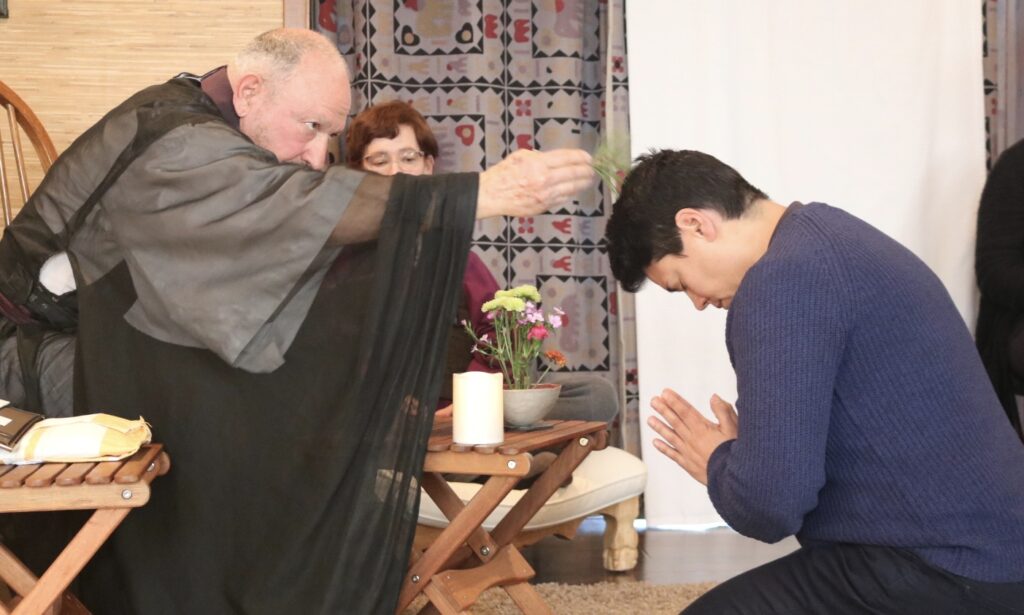
Anyone can call themselves a Buddhist, but across Buddhist traditions there are specific rituals that have been passed down through the ages to mark this rite of passage. In Zen it is called Jukai, which means to receive the precepts. In the Buddha’s original teachings, there were five precepts that lay Buddhists were asked to maintain. In Zen, for lay and ordained alike, there are 16 precepts that are guideposts on how to live a life of integrity. Read more to learn about the precepts and the process of Jukai.
The Sixteen Bodhisattva Precepts
The Three Treasures
I take refuge in the Buddha
I take refuge in the Dharma
I take refuge in the Sangha
Taking refuge in the original Buddha, the teachings, and the many millions of Buddhists who have made Buddhism available to us today is the largest scope of this aspect of Jukai. More practically, we take refuge in our living teacher, their teachings, and the community of other practitioners who are drawn to this particular community. How relieving and inspiring it can feel to join a 2,500 year old tradition that has maintained its strength and its focus on uncovering our inherent wisdom and compassion.
The Three Pure Precepts
Not Creating Evil
Practicing Good
Actualizing Good For Others
Though for many of us these pure precepts seem obvious and simple, when we look more deeply at each one through the magnifying lens of our lives, we come to realize how difficult it is to maintain our ethical standards all of the time.
The Ten Grave Precepts
Affirm life; Do not kill
Be giving; Do not steal
Honor the body; Do not misuse sexuality
Manifest truth; Do not lie
Proceed clearly; Do not cloud the mind
See the perfection; Do not speak of others errors and faults
Realize self and other as one; Do not elevate the self and blame others
Give generously; Do not be withholding
Actualize harmony; Do not be angry
Experience the intimacy of things; Do not defile the Three Treasures
The Ten Grave Precepts are guidelines, not commandments. The more these are studied and expanded to include our entire lives, the more we realize how impossible it is to follow them perfectly, but we try our best each day as they make sense for our lives. Karma is one of the primary teachings in Buddhism, and one way to look at karma is to understand it as the actions in our days that either reinforce behaviors and mental patterns that increase suffering or ones that decrease suffering. Often, our gut intuition knows exactly the best thing to do, but our habitually driven body often wants something different and more pleasurable, more exciting, and more supportive of the continuation of the ego, the set of defense patterns that have helped us avoid the reality of our emotional and spiritual lives. In effect, studying these precepts helps us see where we are unnecessarily creating suffering for ourselves and others.
The Steps to Become a Buddhist
Some people may go through this process in a year while others may take twenty. Some folks will decide never to make this commitment, but will continue to participate with their own internal commitment. Each person’s spiritual path is honored.
- Begin to develop a relationship with the community and the teachers of GMZC.
- Attend weekly meditations, courses and classes, retreats, etc. and make a stronger connection to your Zen practice.
- Speak with the Teachers and express your desire to become a Buddhist.
- Sew your rakusu (the bib that you see many people wearing in the photos on our website).
- Go through the Jukai ceremony. You’re a Buddhist!
